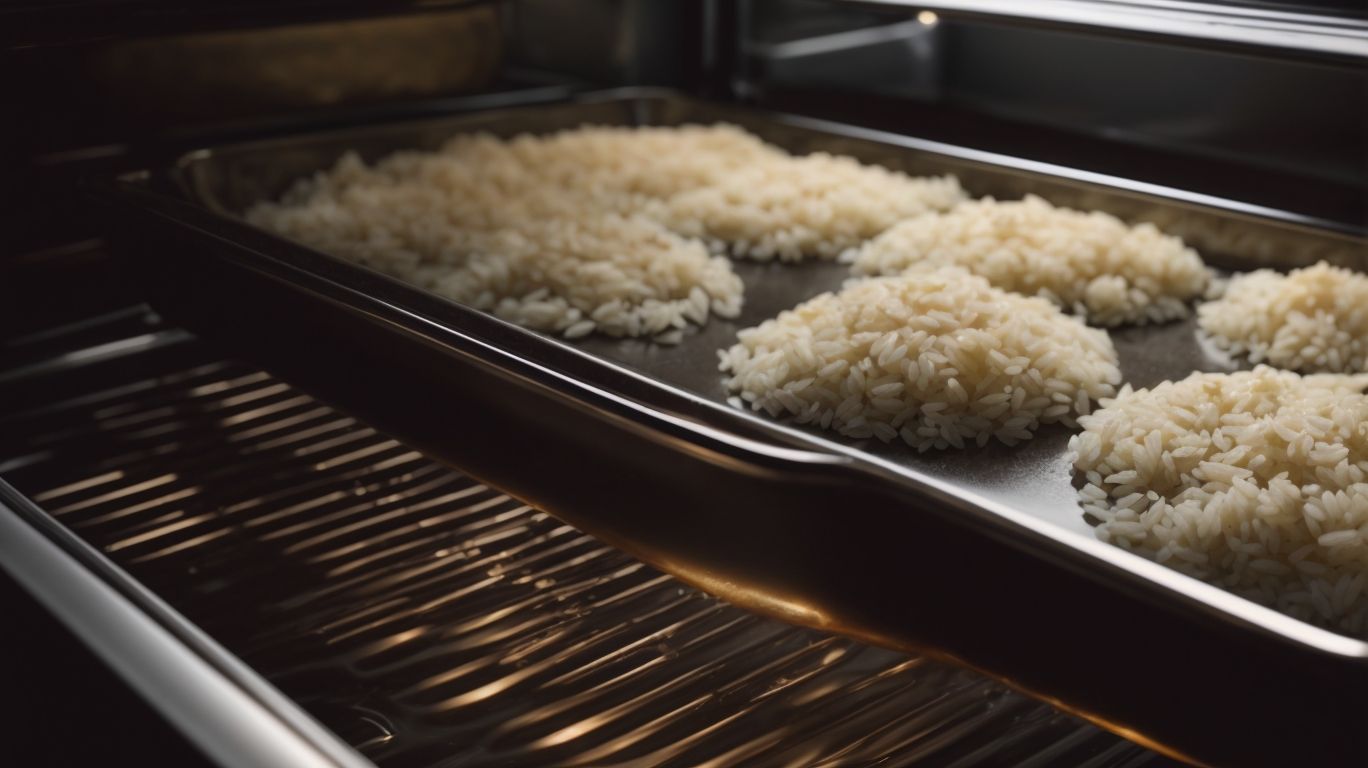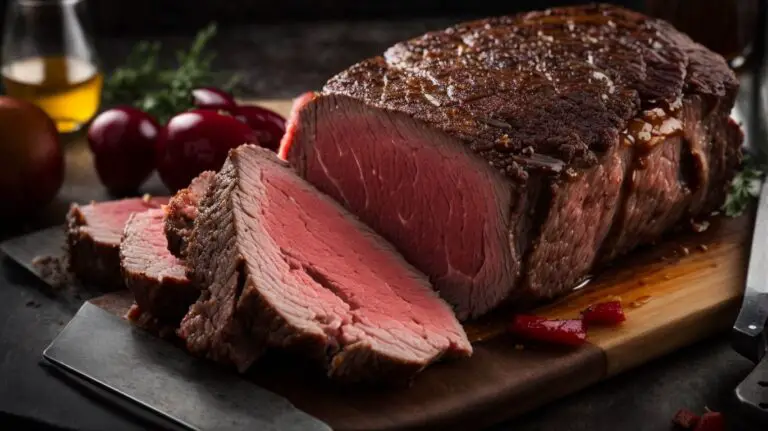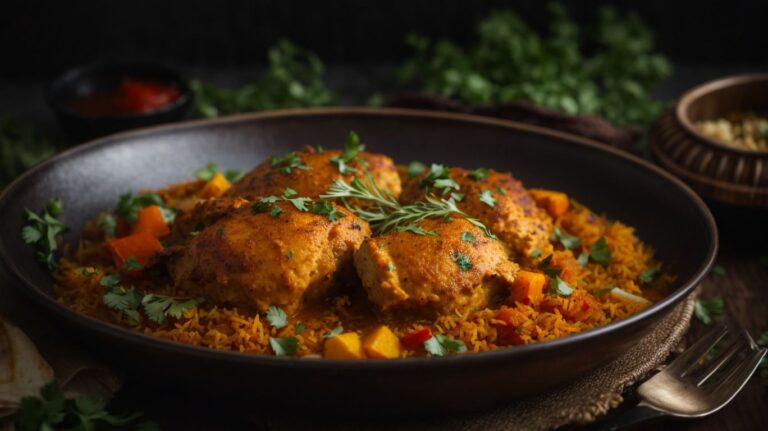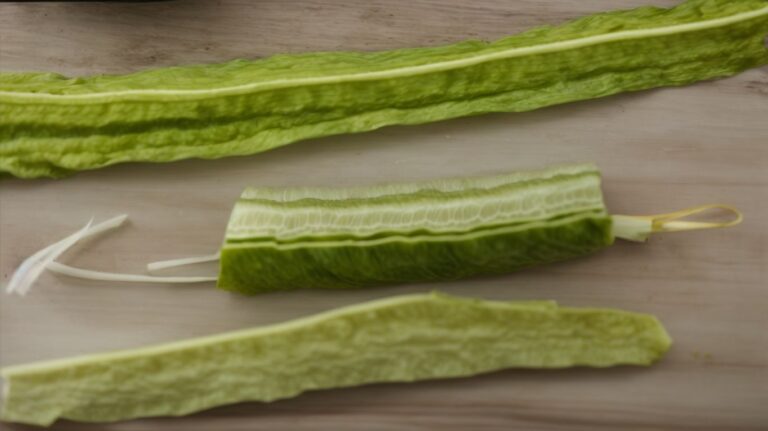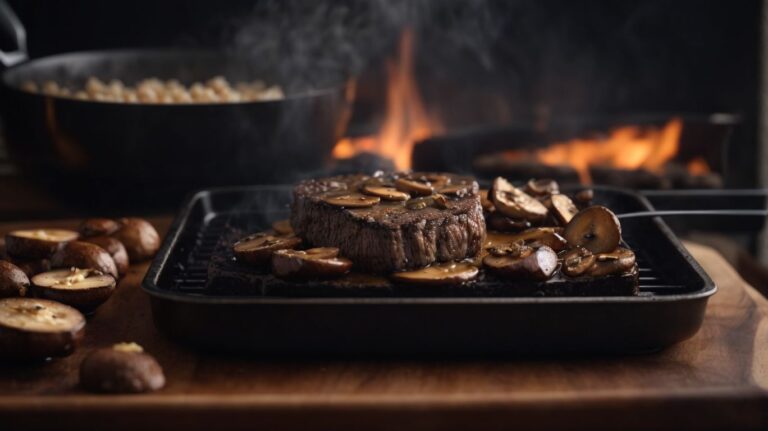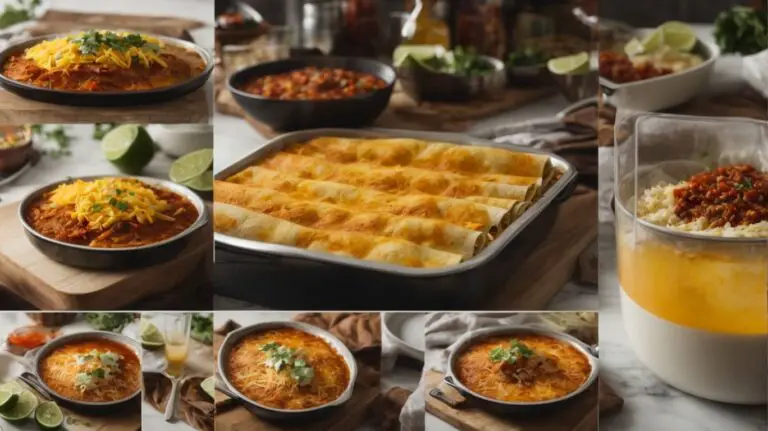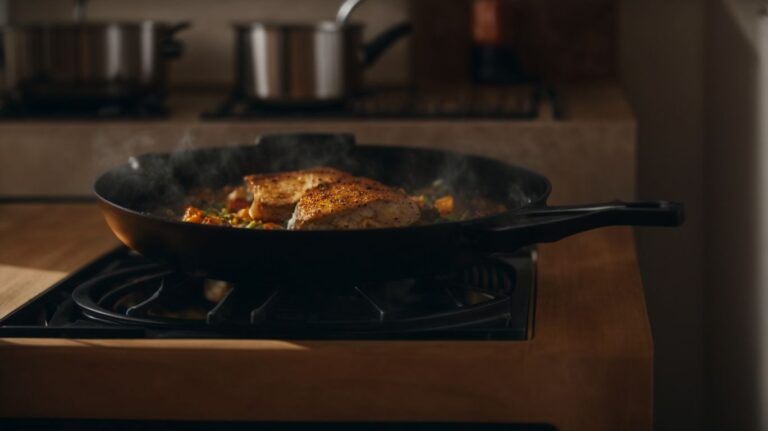How to Cook Rice in the Oven for Large Quantities?
Looking for a hassle-free way to cook rice in large quantities?
In this article, we will explore the benefits of cooking rice in the oven, including saving time and effort, cooking perfect fluffy rice, and being able to cook large quantities at once.
We will also discuss the type of rice to use and what tools you will need. Stay tuned for a step-by-step guide on how to cook rice in the oven effortlessly. Let’s get cooking!
Key Takeaways:
Why Cook Rice in the Oven?
Cooking rice in the oven offers numerous advantages, including time efficiency, ease of preparation, and the ability to cater to large groups effortlessly while ensuring perfectly fluffy rice every time.
One of the key benefits of using the oven method for cooking rice is the significant time-saving aspect it provides. Unlike traditional stovetop methods that require constant monitoring and stirring, once you place the rice in the oven, you can attend to other tasks without worrying about it. This time efficiency is especially advantageous when cooking for gatherings or events.
The convenience of being able to cook rice in large quantities at once is a game-changer for those who need to prepare meals for many people. The oven’s capacity allows you to cook multiple batches simultaneously, minimizing the overall cooking time and effort required.
Regarding rice texture, the oven method consistently delivers perfectly cooked, fluffy rice. The gentle, even heat distribution in the oven helps each grain cook uniformly, resulting in a fluffy and light texture that is hard to achieve with other cooking methods. This consistency ensures that you get top-quality rice every time you use the oven for cooking.
Saves Time and Effort
Opting to cook rice in the oven not only saves valuable time but also greatly reduces the effort required in monitoring and stirring the cooking process.
By utilizing the oven for cooking rice, individuals can enjoy a hassle-free cooking experience with minimal supervision needed. The oven method allows for a more hands-off approach as the heat is evenly distributed, eliminating the need to constantly check or stir the rice. This efficient cooking technique not only streamlines the preparation process but also ensures consistent results with fluffy, perfectly cooked rice every time. The oven’s controlled environment helps to free up valuable stovetop space, enabling simultaneous preparation of other dishes.
Cooks Large Quantities
The oven method excels in catering to large gatherings or events where a crowd-pleasing quantity of perfectly cooked long-grain rice is required without compromising on quality or texture.
When preparing food for a crowd of 50 or more, efficiency is key, and utilizing an oven to cook rice is a game-changer. Not only does this method allow you to cook larger quantities than traditional stovetop methods, but it also frees up valuable stovetop space for preparing other dishes concurrently.
In addition, oven-cooked rice tends to be more consistent in texture and evenly cooked, particularly when dealing with larger batches. This can be a lifesaver when aiming to serve a large group without the risk of some portions being overcooked or undercooked. By using the oven, you can easily monitor and adjust the cooking process, ensuring that the rice reaches the perfect fluffy consistency.
Creates Perfectly Fluffy Rice
The oven-cooked rice method guarantees consistently perfect results with each grain cooked to a tender and fluffy perfection that is hard to achieve through traditional stovetop cooking.
One of the primary advantages of using the oven method for cooking rice is the even distribution of heat, eliminating the risk of unevenly cooked grains. This process allows the rice to absorb the liquid evenly, resulting in a uniform texture throughout.
The gentle heat in the oven helps prevent any scorching or sticking at the bottom of the pot, which commonly occurs when cooking on the stovetop. This means you can enjoy perfectly fluffy rice without the hassle of constantly monitoring the cooking process.
What Type of Rice to Use?
Selecting the right type of rice is crucial for achieving the desired texture and flavor in your oven-cooked dish, with options ranging from long-grain rice for fluffy results to brown or white rice for specific culinary preferences.
Long-grain rice, like Basmati or Jasmine, is known for its elongated grains that stay separate when cooked, making it ideal for dishes like pilaf or biryani.
On the other hand, brown rice, with its nutty flavor and chewy texture, provides a healthier alternative packed with nutrients and fiber, enhancing dishes like casseroles or stir-fries.
White rice varieties, such as Arborio or Jasmine, are versatile and absorbent, creating creamy textures in risottos or sushi rolls.
Each of these rice types brings a unique flavor profile and consistency to your meals, elevating the overall dining experience.
What You Will Need?
Before embarking on your oven-cooked rice journey, ensure you have the necessary tools and ingredients, including an oven-safe baking dish, aluminum foil for sealing, measuring cups for accuracy, water for cooking, and salt to enhance the flavor.
Having an appropriate baking dish is crucial as it allows for even heat distribution, ensuring your rice cooks uniformly. Aluminum foil is essential for sealing in moisture, preventing the rice from drying out during the cooking process. Measuring cups are critical for achieving the perfect water-to-rice ratio, resulting in fluffy grains. Water acts as the primary cooking medium, facilitating the absorption of flavors. Lastly, salt not only seasons the rice but also helps bring out the natural taste of the dish.
Oven-Safe Baking Dish
An oven-safe baking dish is a fundamental requirement for preparing oven-cooked rice, providing a reliable vessel for even heat distribution and optimal cooking results.
Regarding cooking rice in the oven, the choice of the right cookware is crucial for achieving the desired texture and flavor. The oven-safe baking dish plays a vital role in ensuring that the rice is cooked uniformly, preventing hot spots that can lead to unevenly cooked grains. By using a high-quality bakeware that is designed to withstand the oven’s heat, you can guarantee that your dish will be cooked to perfection every time.
Aluminum Foil
Aluminum foil serves as a versatile covering to seal the baking dish during the oven cooking process, trapping moisture and heat to facilitate the perfect rice texture.
When you cover the baking dish with aluminum foil while cooking rice in the oven, it acts as a barrier to prevent the escape of steam, ensuring that the rice cooks evenly and absorbs all the flavors of the dish.
Sealing the dish with foil also creates a mini-steam chamber that surrounds the rice, effectively mimicking the environment of a rice cooker. This heat retention not only helps in thorough cooking but also maintains the ideal moisture level, resulting in fluffy and tender rice grains at the end of the cooking process.
Measuring Cups
Accurate measurements are key to achieving consistent and delicious oven-cooked rice, making the use of measuring cups essential for precise ingredient quantities and successful cooking outcomes.
When following a recipe, even the slightest variation in ingredient amounts can alter the final dish’s taste and texture.
Using measuring cups allows you to follow the recipe closely, ensuring the right balance of flavors and consistency.
Whether it’s the water-to-rice ratio or seasoning proportions, each measurement plays a crucial role in the dish’s overall outcome.
Water
Water serves as the essential liquid component for cooking rice in the oven, ensuring that the grains absorb the necessary moisture to achieve the desired fluffy and tender texture.
This hydration process begins as the rice grains absorb the water, causing them to swell and soften gradually. The amount of water used plays a vital role in determining the final consistency of the rice. Too much water can lead to soggy rice, while too little can result in undercooked grains.
Through the oven’s controlled heat, the water present in the closed cooking environment steams the grains, allowing them to cook evenly. This method ensures that each grain cooks uniformly and absorbs the moisture evenly, creating a delightful fluffy texture.
Salt (Optional)
While salt is an optional addition, incorporating it during the cooking process can enhance the overall flavor profile of the oven-cooked rice, providing a subtle seasoning that complements various dishes.
When salt is added to the rice before cooking, it not only seasons the grains themselves but also helps bring out the natural flavors of any accompanying ingredients, such as vegetables or proteins. The salt acts as a flavor enhancer, balancing out any potential blandness and elevating the entire dish to a new level of taste. Its role goes beyond mere seasoning; it interplays with the other elements, creating a harmonious blend of flavors that can cater to diverse culinary preferences.
Step-by-Step Guide to Cooking Rice in the Oven
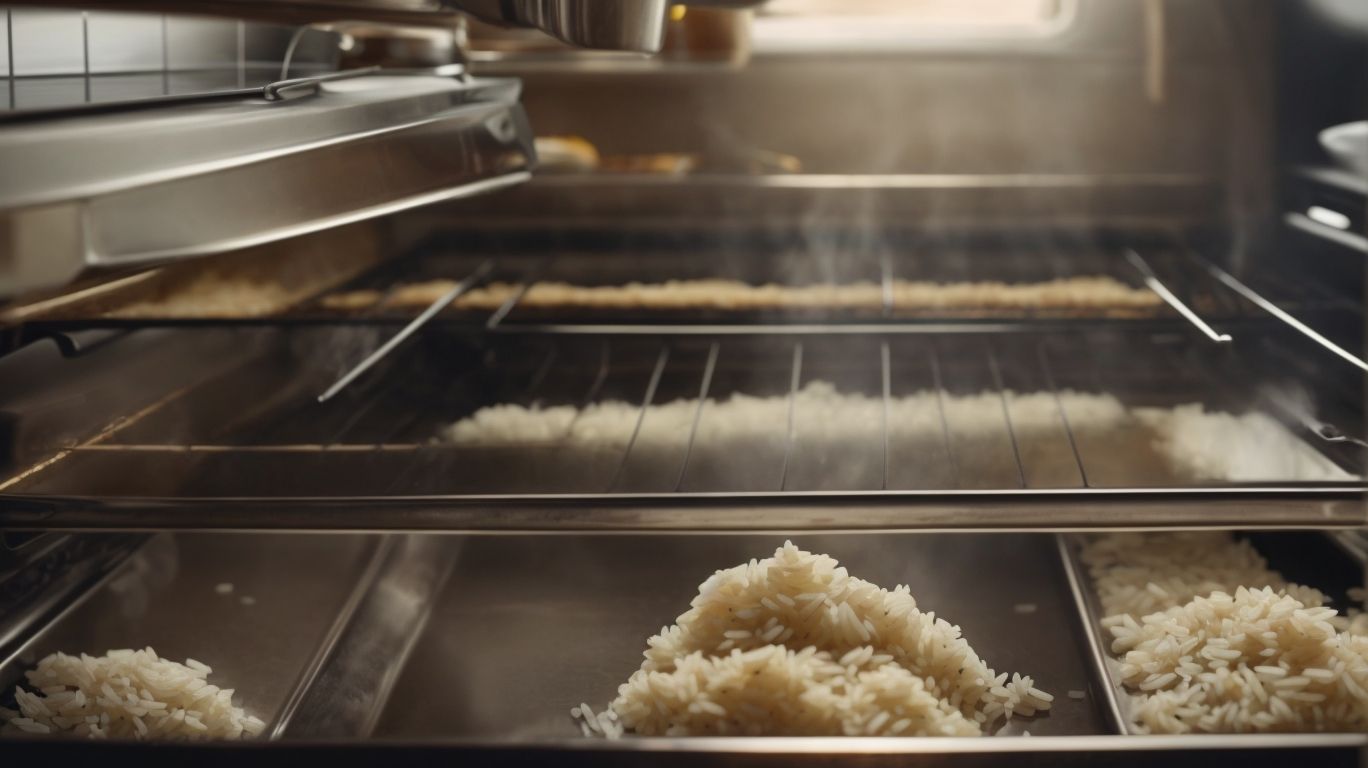
Credits: Poormet.Com – Dylan Anderson
Mastering the art of oven-cooked rice involves a systematic approach that guarantees fluffy, perfectly cooked grains ready to be served and enjoyed with your favorite dishes.
When cooking rice in the oven, the first crucial step is to rinse the rice thoroughly under cold water to remove excess starch, which can lead to sticky results. Next, choose an oven-safe dish with a tight-fitting lid to ensure steam is trapped during cooking, aiding in achieving that desirable fluffy texture.
After rinsing the rice, combine it with water in the chosen dish at a ratio of 1:2 for most types of rice, unless specified otherwise on the packaging. Add a pinch of salt for flavor enhancement, cover the dish securely, and place it in a preheated oven at around 350°F.
Preheat the Oven
The initial step in oven-cooked rice preparation is to preheat the oven to the recommended temperature, ensuring that the cooking environment is adequately heated for optimal rice cooking.
By preheating the oven, you set the stage for a controlled cooking process that promotes even heat distribution throughout the oven space. This ensures that the rice cooks uniformly, avoiding unevenly cooked grains or burnt patches. When the oven reaches the specified temperature, the heat interacts with the cooking vessel and the rice, creating a consistent environment for the grains to absorb moisture and cook thoroughly. Precise temperature control plays a significant role in determining the final texture and flavor of the rice, making preheating an essential step in achieving delicious and perfectly cooked rice.
Rinse and Drain the Rice
Properly rinsing and draining the rice before cooking is crucial for removing excess starch and ensuring that the grains cook evenly and maintain their individual integrity during the oven baking process.
Rinsing the rice thoroughly under cool, running water helps to wash away the surface starch which can cause the grains to become gummy when cooked.
Draining the rinsed rice in a fine-mesh sieve allows any excess water to drip away, preventing the rice from becoming mushy and clumping together during oven baking.
This process not only improves the texture of the cooked rice but also helps to prevent any debris or impurities from contaminating the final dish, ensuring a delicious and wholesome outcome.
Add Rice and Water to Baking Dish
Carefully measuring and adding the rice and water into the oven-safe baking dish is a critical step that determines the final texture and moisture content of the oven-cooked rice.
When combining the rice and water, the ratio is key; typically, use one part rice to two parts water. This ensures that the rice cooks evenly and absorbs the liquid to achieve that perfect, fluffy consistency. The type of rice being used can influence the amount of water required, so adjusting the quantity based on the variety is wise.
Choosing the right baking dish is also crucial – opt for a dish with a fitting lid to trap steam, aiding in the cooking process. The dish should be oven-safe and of a suitable size to prevent spillovers and ensure even cooking.
Cover and Bake
Covering the baking dish with aluminum foil and baking it in the preheated oven at the specified temperature allows the rice to steam and cook to perfection, ensuring a fluffy and tender end result.
When the baking dish is sealed with foil, it effectively traps the moisture released by the rice during the cooking process. This moisture then circulates within the covered dish, creating a steamy environment that envelops the rice grains, aiding in their even cooking.
The controlled heat of the oven ensures that the rice cooks at a steady pace, absorbing the flavors of any added seasonings or broth. This gentle cooking method helps prevent the rice from drying out or becoming mushy, resulting in perfectly cooked grains that are separate and not clumped together.
Fluff and Serve
Once the rice is cooked to perfection, fluff the grains with a fork to separate them gently, then serve the fluffy rice as a delightful accompaniment to various dishes or for convenient meal prep options.
Fluffing the cooked rice not only enhances its texture but also helps in aerating the grains, making them light and fluffy. This simple step can elevate the overall presentation of your dish.
For a more elegant serving approach, consider garnishing the fluffy rice with fresh herbs like parsley or a drizzle of olive oil. This not only adds visual appeal but also introduces delightful flavors that complement the meal.
Whether you choose to enjoy the fluffy rice as a side dish with your favorite main course or as a standalone meal, its versatility makes it a go-to option for any meal occasion.
Frequently Asked Questions
What is the best type of rice to cook in the oven for large quantities?
The best type of rice to use for cooking in the oven for large quantities is long-grain white rice. It has a neutral flavor and cooks evenly, making it perfect for bulk cooking.
Can I use a regular baking dish to cook rice in the oven for large quantities?
Yes, you can use a regular baking dish as long as it has a tight-fitting lid. This will help trap the steam and ensure that the rice cooks evenly.
How much water should I use when cooking rice in the oven for large quantities?
The general rule for cooking rice is 2 cups of water for every 1 cup of rice. However, when cooking in the oven, you may need to add an extra 1/4 cup of water to account for evaporation.
Can I add seasonings or other ingredients to the rice when cooking in the oven for large quantities?
Yes, you can add seasonings, vegetables, or even protein to the rice when cooking in the oven. Just make sure to adjust the amount of water accordingly and mix everything together before placing in the oven.
How long does it take to cook rice in the oven for large quantities?
It typically takes 45-50 minutes to cook rice in the oven for large quantities. However, this may vary depending on the type of rice and your oven’s temperature. It’s always best to check the rice towards the end of the cooking time to ensure it’s fully cooked.
Can I freeze the cooked rice that was cooked in the oven for large quantities?
Yes, you can freeze cooked rice that was cooked in the oven for large quantities. Just make sure to let it cool completely before transferring it to an airtight container and placing it in the freezer. It can be stored for up to 3 months.

